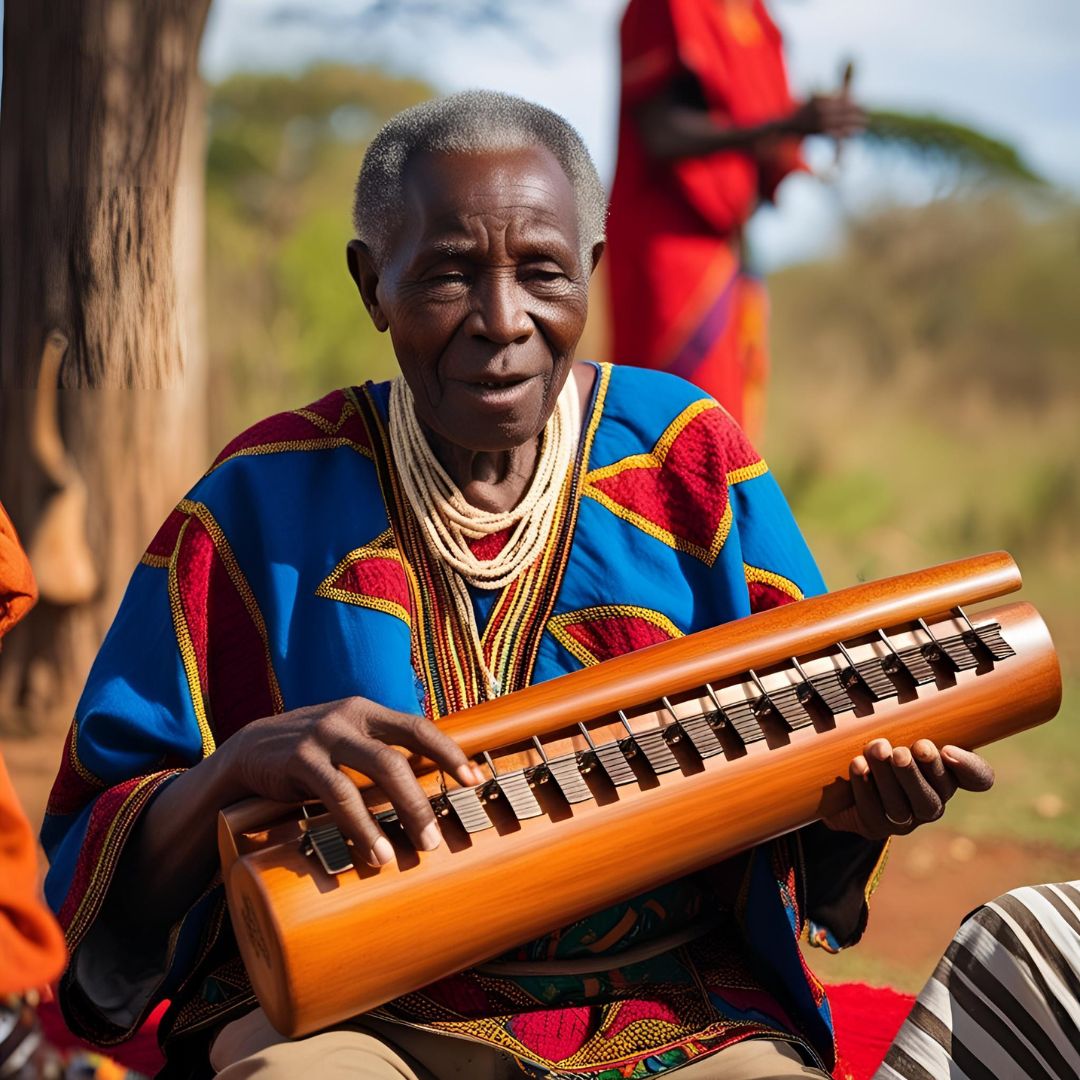In many African cultures, music goes far beyond entertainment. It is a spiritual expression, a connection to ancestors, and a tool for healing and celebration. Amidst drums and chants, a variety of traditional instruments—rich in sound and history—have gradually faded from common use, replaced by modern technologies. Yet their unique tones still echo in village memories, ceremonies, and rituals.
Rediscovering these instruments is to reconnect with a powerful cultural heritage, crafted from wood, gourds, strings, and skins, with melodies that speak of identity, spirituality, and community.
Kalimba: Melodies for the Spirit
The kalimba, also known as the “thumb piano,” is made from metal tines mounted on a wooden resonator. Played with the thumbs, it produces soft, hypnotic sounds ideal for meditation and reflection.
Traditionally, it’s used in healing rituals, spiritual invocation, and storytelling. Kalimba music guides listeners toward balance and ancestral connection. Although replaced in many contexts by digital instruments, it is finding new life in sound therapy and cultural revival movements.
Ngoni: Rhythms of the Griot
The ngoni, originating from West Africa, is considered an ancestor of the banjo. Made with wood and animal skin and strung with 4 to 7 strings, it produces dry, rhythmic sounds that pulse with the oral traditions of the Mandinka people.
Griots—traditional storytellers—used the ngoni during ceremonies and gatherings to pass down wisdom. Though its practice has declined, modern musicians are reviving it by blending it with jazz, blues, and electronic music.
Balafon: The African Xylophone
The balafon is an ancient African xylophone made of wooden slats over calabash resonators. Each calabash is precisely tuned to amplify specific notes, resulting in metallic, vibrating sounds.
Used by cultures such as the Bambara and Dogon, the balafon plays a central role in rites of passage, weddings, and funerals. Each melody carries meaning—communicating emotions like sorrow, joy, or strength. Despite threats from urbanization, cultural projects in countries like Burkina Faso and Mali aim to preserve and teach the balafon to new generations.
Mbira: Voice of the Ancestors
Closely related to the kalimba, the mbira is one of the most spiritual instruments in Africa. Among the Shona people of Zimbabwe, it is used in ceremonies called bira to summon ancestral spirits.
Built with metal keys over a wooden board and a calabash resonator, the mbira produces deep, complex harmonics that seem to emerge from another realm. It plays a role in storytelling and induces trance-like states. Although modern instruments have overtaken its use in many places, educational projects are reintroducing the mbira to schools and cultural centers.
Instruments That Carry Cultural Wisdom
These instruments are not just musical devices—they are vessels of collective memory, emotional healing, oral education, and spiritual connection. Their sounds mark life’s transitions, honor the sacred, and reinforce communal bonds.
Their materials—bamboo, gourds, leather, and wood—reflect the land they come from, and each tone carries a story. Losing these sounds also means losing worldviews and values that have endured for centuries.
Preserving Sound, Preserving Culture
Yet there is hope. Musicians, ethnomusicologists, teachers, and communities are reclaiming these traditions, blending ancient techniques with modern creativity. Cultural revival movements and education initiatives across Africa are making sure these instruments continue to speak.
A Listening Experience That Transcends Time
Listening to forgotten African instruments offers more than just auditory pleasure—it’s a journey into ancestral wisdom. In a world dominated by digital noise and fast rhythms, these sounds invite conscious listening, inner silence, and cultural respect.
Each melody played on a mbira or ngoni reminds us of sound’s power—to heal, to teach, and to connect. By rescuing these forgotten voices, we retell the story of humanity.





